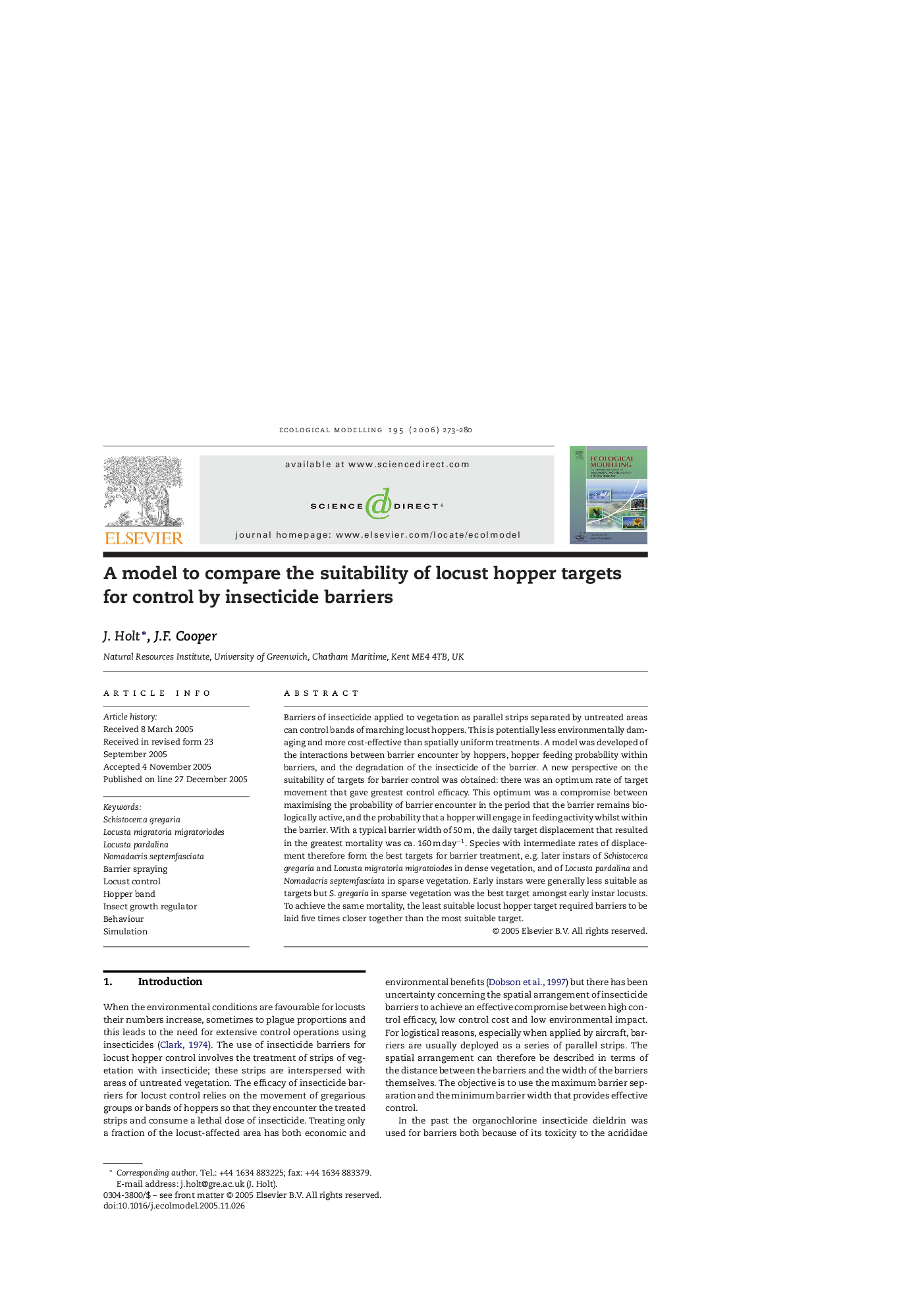| Article ID | Journal | Published Year | Pages | File Type |
|---|---|---|---|---|
| 4379006 | Ecological Modelling | 2006 | 8 Pages |
Abstract
Barriers of insecticide applied to vegetation as parallel strips separated by untreated areas can control bands of marching locust hoppers. This is potentially less environmentally damaging and more cost-effective than spatially uniform treatments. A model was developed of the interactions between barrier encounter by hoppers, hopper feeding probability within barriers, and the degradation of the insecticide of the barrier. A new perspective on the suitability of targets for barrier control was obtained: there was an optimum rate of target movement that gave greatest control efficacy. This optimum was a compromise between maximising the probability of barrier encounter in the period that the barrier remains biologically active, and the probability that a hopper will engage in feeding activity whilst within the barrier. With a typical barrier width of 50 m, the daily target displacement that resulted in the greatest mortality was ca. 160 m dayâ1. Species with intermediate rates of displacement therefore form the best targets for barrier treatment, e.g. later instars of Schistocerca gregaria and Locusta migratoria migratoiodes in dense vegetation, and of Locusta pardalina and Nomadacris septemfasciata in sparse vegetation. Early instars were generally less suitable as targets but S. gregaria in sparse vegetation was the best target amongst early instar locusts. To achieve the same mortality, the least suitable locust hopper target required barriers to be laid five times closer together than the most suitable target.© 2005 Elsevier Science Ltd. All rights reserved.
Related Topics
Life Sciences
Agricultural and Biological Sciences
Ecology, Evolution, Behavior and Systematics
Authors
J. Holt, J.F. Cooper,
